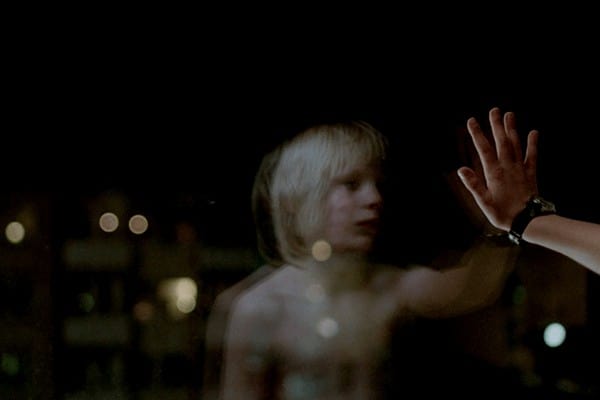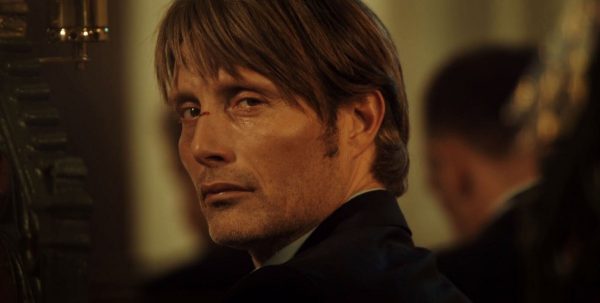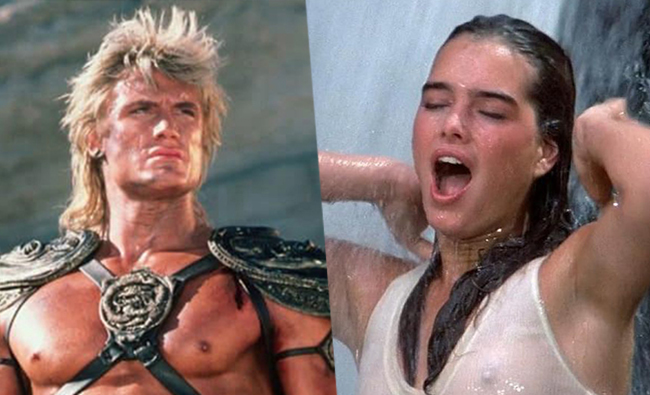Tom Jolliffe journeys across the cinematic landscape of the Nordic countries…

Every cinematic nation tends to have a particular forte, or a period in time very distinct for creative output that sees them produce work unique to them. Japan had a period of Samurai films and one of ghost stories. Italy have had neo-realism and horror. France have had avant-garde cinema, and also a pretty immense period of extremely cool Gallic infused thrillers. Brits a penchant for gritty crime films, and so on…
In terms of Nordic cinema, each individual nation, Sweden, Denmark, Iceland, Finland and Norway certainly have unique eccentricities of their own, but there’s an overriding consistency between much of the best works of each. The region shares much of the same atmosphere and cold winters, so often a backdrop in the films (especially thrillers). Likewise, there’s a distinct leaning to introspective characters and oodles of repression. This was something particularly prevalent in an era that brought us Carl Theodore Dreyer who gave us The Passion of Joan of Arc (of course, in silent cinema, the lack of dialogue instinctively lends a very visual focus on characters emotions, and showing rather than telling) and Ordet.

One of the biggest icons in cinema remains Ingmar Bergman. A director with a pre-occupation with faith, guilt, repression, regret and emotional distance. As a director, though he has films with incredibly powerful dialogue, he was also a master at telling stories through a characters face, or telling part of a story. The rest was left to the audience to decode, and whether we were watching Max Von Sydow, Bibi Andersson, Harriet Andersson or any other Bergman stalwart, we became enthralled in watching a character emote while saying nothing, or saying one thing and clearly pondering another. In terms of that visual storytelling, in creating a perfect canvas for an actor to work in, Bergman has never been surpassed, and rarely matched.

A film that really started my fascination with Nordic cinema came later, but like most film from the region, and the spare approach to dialogue, it owed a debt to the legacy Bergman created. The film was Let The Right One In. A stunning vampire film that ticked off a number of the genre expectations, but in a haunting, reflective and poetic manner. It was so unlike what you would have got from American cinema (outside of art-house or indie), with a lingering pace and breathing space to allow the young cast the chance to create moments of introspective thought. These moments that draw you in, where the prerequisite reaction in American studio cinema may have been to cut a scene shorter, add in dialogue to tell rather than show, or pep up the dynamism through more intrusive editing. American studio cinema at the time was probably what I had been watching more than anything else. The film blew me away.
The colour palette in these films is often wintry. Cold colours and browns. Cut through with the occasional ambers (but without feeling warming). It creates a kind of distance that rather than repelling us, draws us in. It’s intriguing. In Let The Right One In, Tomas Alfredson isn’t afraid to let us guess the context of a look, or a scene in general. It doesn’t need to be spelled out. The following year, The Girl With The Dragon Tattoo had a similar impact and travelled incredibly well. It further cemented my interested in seeing more (initially from Sweden). The dark murder mystery wasn’t afraid to delve into very dark corners. There are several infamous scenes of course, and as a character, Lisbeth (playing exceptionally by Noomi Rapace) is enthralling. Both these films inevitably got the Hollywood remake treatment. Let Me In proved solid, if distinctly indistinct. David Fincher in fairness with his Dragon Tattoo remake actually managed to capture a really Nordic feel to proceedings, and lent a lot on the kind of introspection the original did so well. That said, it’s not often Hollywood remakes get a genuine master to direct proceedings. See Nolan directing Insomnia, remake of a brilliant Norwegian film with the always excellent, Stellan Skarsgard (more on him later), or Scorsese remaking the Hong Kong classic Infernal Affairs, with The Departed.

Over the years there have been some great acting exports from the Nordic regions of course. I mean it’s where Dolph Lundgren is from for a start, the Swede giant. Additionally the aforementioned Skarsgard (and his offspring, currently doing extremely well), and a certain Mads Mikkelsen (and indeed the also aforementioned Rapace). He initially had a breakthrough with collaborations with Nicolas Winding Refn, who has an eclectic mix of influence from his native Denmark, through Europe, Asia and classic American cinema, and a distinctly high contrast colour palette that marks him a little different from a few Nordic contemporaries. Mikkelsen then hit it really big with his villainous turn in Casino Royale, an absolutely perfect role for an actor coming from a cinematic background specialising in internalising so much complexity. Mikkelsen is the epitome of the perfect Nordic drama/thriller actor, personified so well in The Hunt (Denmark), a relentlessly discomforting, frightening thriller that sees him play a pre-school teacher falsely accused of molestation. It had everything you expect from great Nordic thrillers, from the cold atmosphere, a rural fascination (there are many films that move away from the big Cities to show more remote communities, and all the dynamics that can bring), the considered pace, and all the struggles to contain emotions within, when everything just wants to break out. There usually tends to be some kind of reactive moment, some kind of blowout in many of these films and the wait for these moments only adds to the fascination. Additionally, it covered a subject in a blunt manner that you’d probably never see from mainstream American or British cinema. It was a brave film to make, and certainly a challenging role for Mikkelsen to take.

Here’s another aspect of Nordic cinema that I’ve enjoyed too. Character actors are leads more often it would seem. There doesn’t seem a predisposition to cast the dashingly handsome movie star lead or glamorous flavour of the month. They’ll happily portray the more unconventional, or mature characters and with a brutal honesty at times and a tendency to hit the sombre note toward the end. You could look toward Dane director Lars Von Trier, as a particular specialist in sombre, who brings that daring mentality to his films, whether he makes them in his homeland or wherever else. Very well exemplified in something like Dancer in The Dark, his grim, crushing and absolutely harrowing drama (with a magnificent Bjork). You just wouldn’t get it in Hollywood, particularly as a musical. Generally, it’s character first, and with actors who can tell a story without words.

Speaking of great character actors, Swedish export Stellan Skarsgard has been in so many great films across the world. He’s been in several Norwegian films too, playing something of an outsider. In Order of Disappearance sees him as a recently crowned citizen of the year. A successful example of immigration and integration, and accepted into his remote wintry community. As Nils he mans the snow plough and keeps the roads open. When his son turns up dead from a drugs overdose, Nils is certain something is amiss and soon finds out his son was murdered, leading to revenge. The black comedic thriller has all those great traits. There are swathes of repression lingering between characters, or felt by them individually. Additionally, another speciality of many Nordic films is a uniquely macabre sense of humour that permeates this film particularly well. Skarsgard like so many Nordic leads is a character of few words, and has reached a point of explosive reactions as he dishes out revenge, one by one, working his way through the criminal organisation who killed his son. Again, it’s a slow burn, very deliberate. The town, the conditions, the look of everything plays such a big part. The settings are so important in these films, as they create specific conditions for the character to exist within, and they shape the character and the story. Again this seems to be part of why more remote settings seem to be a go to (see another great Norwegian thriller, Hevn as another example where setting becomes a character in itself). Apart from anything else too, cinematically these cold, stark, often snowy landscapes look gorgeous on film (often shot in widescreen too).
Another great film absolutely stuffed with repression was recent Icelandic thriller A White, White Day, which was greeted with excellent reviews. A man loses his wife in a car accident and soon discovers she may have been having an affair. He slowly begins to unravel, having already been suffering from isolation and grief. The niggling thought of his wife’s affair lingers with him and grows like a cancer, until he finds his behaviour becoming increasingly dangerous. It’s a definite slow burn with every facet you would expect of cinema in the region, and a perfect example of creating gritty characterisations and searing honesty. There’s not a particularly cut and dry resolution either, which, when the ending isn’t bluntly, finitely dark, is common for Nordic drama/thrillers. It cuts like reality, where some pain doesn’t just disappear like it does in the movies. The best some of these characters can hope for is an acceptance and a tolerance for their condition. We can occasionally catch these like moments in time, rather than definitive beginning, middle and end, particularly when the ‘end’ is left so open (going back to The Hunt, which had a numbing, raw and honest ending).
What are you favourite Nordic films? Let us know on our social channels @flickeringmyth…
Tom Jolliffe is an award winning screenwriter and passionate cinephile. He has a number of films out on DVD/VOD around the world and several releases due out in 2021, including, Renegades (Lee Majors, Danny Trejo, Michael Pare, Tiny Lister, Ian Ogilvy and Billy Murray), Crackdown, When Darkness Falls and War of The Worlds: The Attack (Vincent Regan). Find more info at the best personal site you’ll ever see here.










